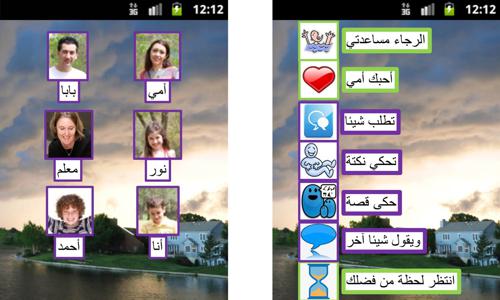
Mark Hasegawa-Johnson, Hanady Mansour Ahmed, Eiman Mustafawi and Haitham El-Bashir; QNRF NPRP 7-766-1-140
Overview
Children who have difficulty speaking on their own, because of a gross motor disorder like Cerebral Palsy, sometimes use speech-generating augmentative/alternative communication devices (SG-AAC). An SG-AAC is just an app, running on a cell phone or tablet, that allows the user to type in a sentence, then reads the sentence out loud. The problem with SG-AAC is that it’s very slow. We propose to ameliorate the problem of SG-AAC data entry speed by changing the definition of the clinical unit: rather than designing a device to assist only the child with speech pathology, we will design a network of devices to assist his entire family. The child’s device will be linked to software running on his parents’ cell phones. Ten Qatari families will each participate in ten participatory design interviews, the outcome of which will be a network of devices for the child and his family. The child will have the ability to speak using his device, or to use the same system to write text messages that he can send over the internet to his parents. The parents will have the same ability, and will also be able to edit, over the internet, the child’s language generation system, allowing them to adjust, each day, the generation probability of useful words and sentences. User feedback will propagate to related words and phrases based on a statistical model of word similarity. The similarity model, in turn, will refine based on user feedback, according to a learning criterion that seeks to explicitly maximize the expected benefit to the family as a whole.
People
- Mark Hasegawa-Johnson
- Hanady Ahmed
- Eiman Mustafawi
- Haitham El-Bashir
- Hayat Hassan Nejad
- Kaizhi Qian
- Tianyilin Zhu